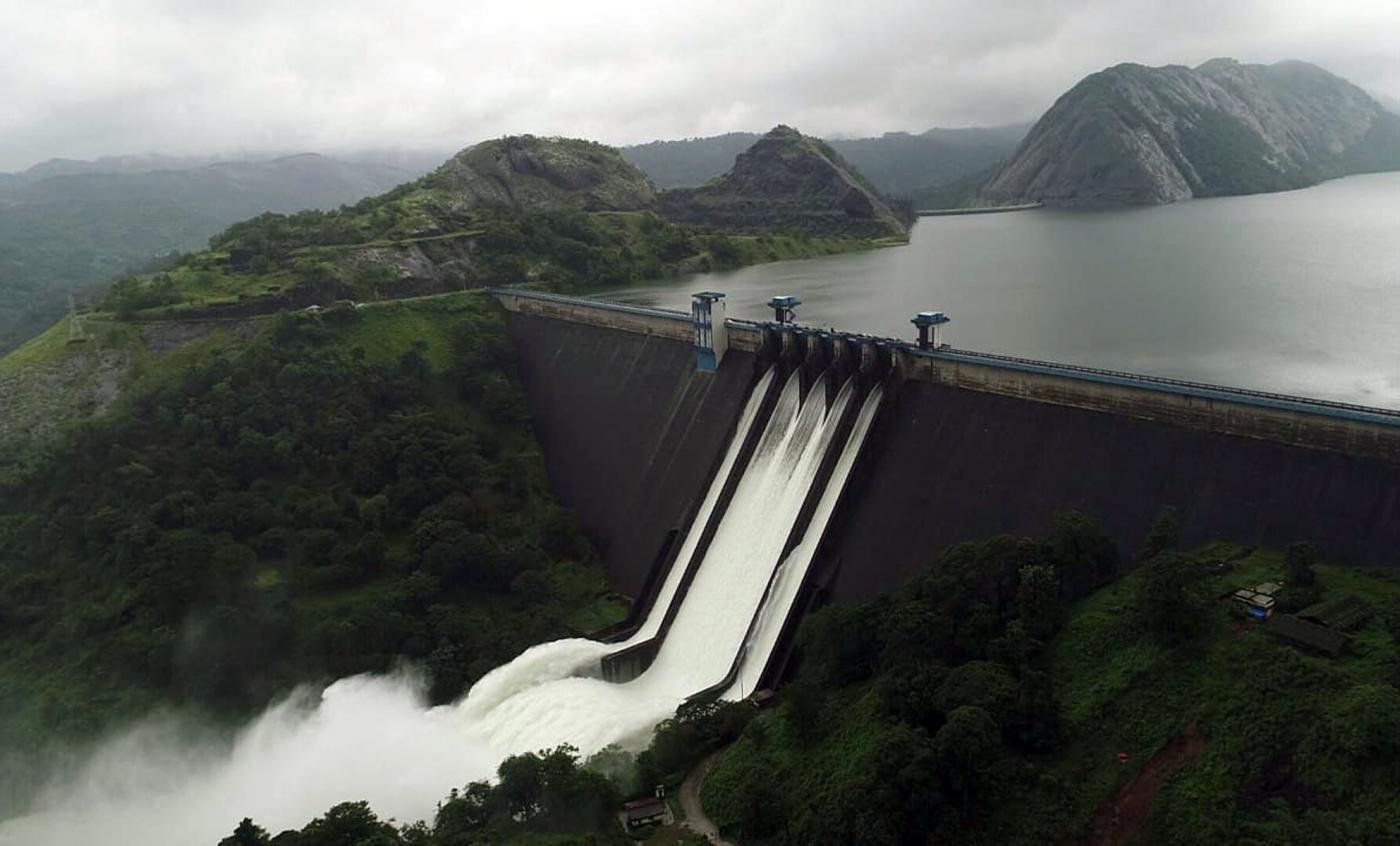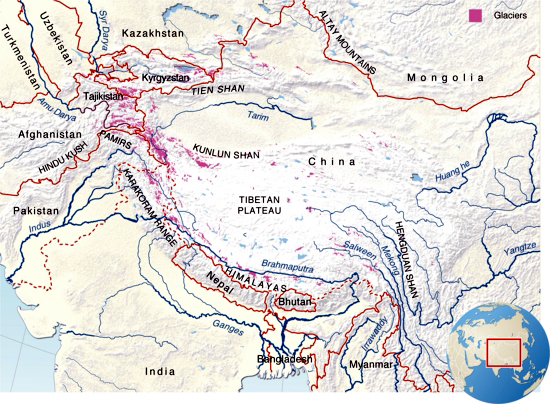 Photo Courtesy: Kiranroice
Photo Courtesy: Kiranroice
Dangerous Leaks in the Roof of the World
In June, Chinese and Indian troops revived a decades-old dispute when they squared off high up in the Himalayas, resulting in the deaths of at least 20 Indian soldiers. The confrontation took place in the Galwan Valley, an area controlled by China but under dispute since the conclusion of the Sino-Indian border war in 1962. The current dispute is over the border, but could it be a harbinger of future conflict? Climate change is forever altering the Hindu Kush-Himalayan (HKH) region. As the HKH region warms, the glacial water that feeds five of the world’s largest rivers will decrease, leaving downstream countries desperate for water—potentially desperate enough to go to war.
Climate Change in the HKH
The Himalayas are the lifeblood of Asia. The HKH is often referred to as the planet’s “third pole” as it is home to the most ice in the world outside of the Arctic regions. The mountain glaciers store water for 250 million people who live in the HKH region and supply regional rivers that nearly 2 billion people in India, China, Pakistan, and neighboring countries rely on.
Unfortunately, climate change threatens the HKH glaciers and water resources. A report published by the International Center for Integrated Mountain Development (ICIMOD) in 2019 found that since 2000 glaciers in the region have retreated by 20 to 47%. The report also found that at least a third of the mountain range’s glaciers will melt by 2100, under even the most extreme emissions reductions. However, if the global community does not cut emissions, two-thirdsof the region’s glaciers will be lost.
The glacial ice melt will be devastating. At first, the melting glaciers will cause rivers to rise. Greater river flow increases the risk of high-altitude lakes overflowing and flooding nearby communities. Over time, however, river flows will fall, depriving hydroelectric dams of the power they need to provide electricity for the region. More seriously, lower river flows will deprive downstream farmers of much needed water. Billions will suffer from water stress and decreased crop yields. Many in the HKH region survive on less than $1.90 a day, meaning the effects of flooding and food insecurity could be catastrophic and lead to instability.
Dam Fever
Large-scale development in the Himalayas was relatively non-existent until the mid-20th century when the newly created Republic of India and People’s Republic of China began jockeying for land in the mountain range. This competition led to war in 1962 and has resulted in considerable tension in the region ever since.
This race for control of the Himalayas coincided with a newfound obsession with dam development. In the 1950s, ‘dam fever’ consumed the developing world as the World Bank began pumping billions of dollars into dam projects. In India, dam development quickly became a national priority because it offered to tame the irregularities of monsoon season. India’s dam obsession reached a climax between 1970 and 1989 when the country constructed nearly 1,500 large dams. Meanwhile, China was building dams at an even faster pace, developing an estimated 20,000 dams across the country after 1949.
What started as a collaborative relationship between the two countries quickly turned into a ‘water grab’ in the decades after the 1962 war. Driving this competition is the need to control the headwaters of many of the world’s largest rivers—the Brahmaputra, Yangtze, Mekong, and Yellow. Due to its geography, China has upstream control of much of the region’s water, and as a result, India receives half of its water from China. Bangladesh, in turn, receives 80% of its water from rivers that flow through India.

Major Rivers Originating in the Himalayas
Climate change is making control of water even more important. China is in immediate need of water to help aid the desertification of its northwest. Meanwhile, annual mean temperatures across India are expected to rise by 4.2 degrees Celsius by the end of the century if emissions do not decrease. The temperature will be even higher over the irrigated plains of the Ganges, causing drought and heatwaves that will leave India desperate for water.
At present, 400 dams spread across India, Nepal, Bhutan, and Pakistan are either under construction or planned for construction, with an additional 100 Chinese dams planned for development in neighboring Tibet. If these dams are completed, the Himalayas could become the most dammed region in the world.
The Cost of Dams
Though the current and planned dam projects will power millions of additional homes, they come with an insidious dark side. Estimates show that Chinese and Indian dams have displaced tens of millions of people. In India, dams have displaced between 16 and 40 million since 1947, and many of those displaced were marginalized indigenous groups.
The region’s dams may also interrupt groundwater flow, causing many communities’ water sources to run dry, and are likely to permanently alter the hydrology of the river system by shifting the river paths. Dams are responsible for more severe downstream flooding when downpours cause reservoirs to overflow, flooding that will only worsen as the climate changes. Finally, dams in the HKH region are especially vulnerable to collapse in a region where earthquakes are commonplace, collapses that would devastate nearby communities.
Security Implications
Dams in the HKH region will exacerbate the climate insecurity caused by Himalayan glacial melt. As rivers in the region surge in the coming decades with melted glacial water, the flooding caused by dam installment and risk associated with breaches will increase. As river flow decreases, dams will further limit the reach of diminishing river water, accelerating water stress and food security for nearly a billion people. Such stress may lead to instability.
The geopolitical implications that will result from this impending climate insecurity are even more frightening. As countries, like India and Bangladesh, feel the stress of limited water supplies, the pressure to secure more access to upstream water will intensify. The stakes in the current race for water between China, India, and other HKH countries will increase, with each country willing to put more on the line to secure the water it needs.
At first glance, the June dispute between China and India in the Galwan Valley is little more than a border squabble. A deeper look, however, suggests that it may be a harbinger of things to come. The dispute is proof that control of the Roof of the World is a priority for both China and India; both sides are not afraid to use force to stand their ground. As climate change and dam development push the stakes higher, today’s spats may become tomorrow’s wars.





